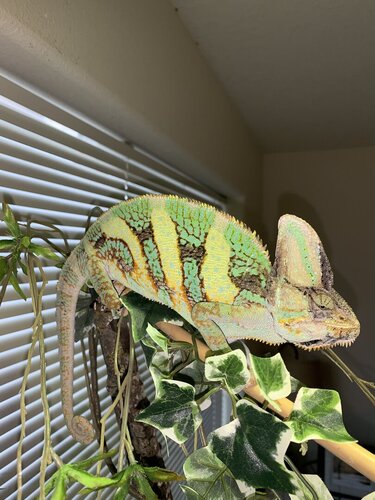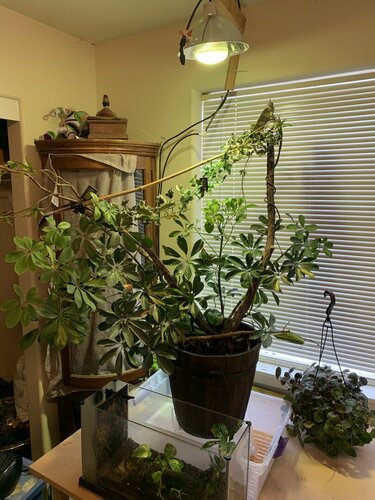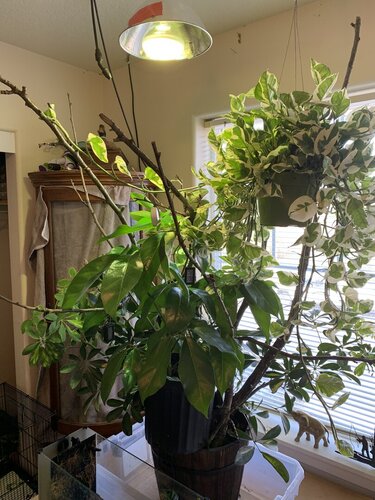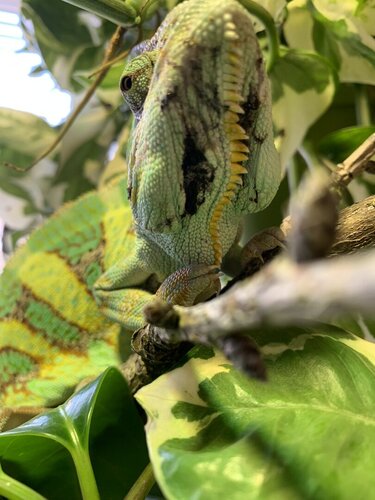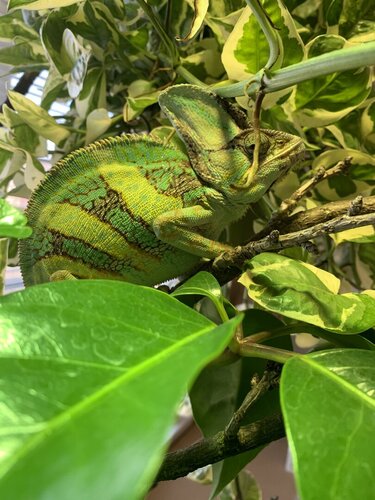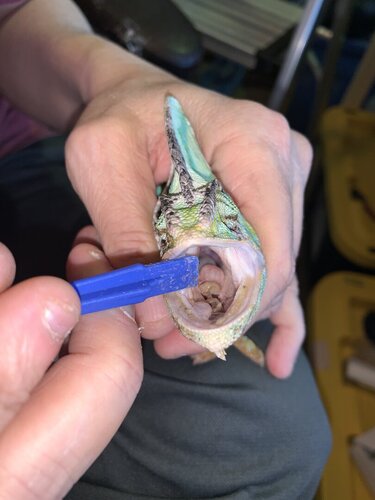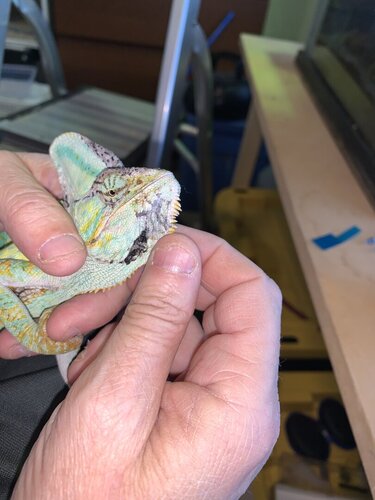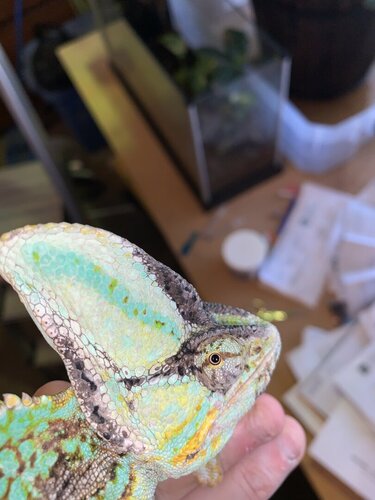CasqueAbove
Chameleon Enthusiast
I have a male veiled chameleon that is just over a year old. He had sustained significant injury to his gular crest (beard/throat area). The purpose of this is not so much what should I do ? But more about the chameleons ability to heal, as well as a rough idea of you might expect to see if your chameleon becomes injured.
So what happened. Godzilla (my male) has an open air enclosure making him technically free range. He has lived in his area happily and only ever tried to get down to reach a higher place. So now he has the highest best spot as I adjusted to where he wanted to be. Well with spring came the urge to wander. He became far more bold and exploratory seeking, well you know. I also have a macaw that I have had since I was 17, 30+ years. One day his escaped wanderings led him to her cage, and he was bit. Again this is not about that part of it.
Date of injury: February 10, 2020.
The initial injury was pretty severe. (see pic.1 & 2) What you are seeing is his tongue sticking out. At first it was unclear if this was by choice, or lack of control. The choice part was because I could theorize that keeping his tongue in put pressure on the wound causing pain. Further I had coaxed it back in, and it would be there foe a while, he did not appear to have complete paralysis of the tongue.


Daily Care:
I was lucky in this area. I have a weed sprayer hoked up so it “rains” I can pump it up and it runs for a bit. Most likely just because it felt good, but he would sit under this all throughout the day. Actually opening his mouth and letting the water run through his wounds. I was going through 2 gallons a day with this(pic 3). This kept his wounds clean and all I really did was watch, and pump the sprayer.

First Issue: Feb 10 – Feb 18
This occurred over the course of the ensuing week. The tongue had proven to be a problem. With it sticking out, combined with the stickiness of their saliva, it was drying to the edge of his mouth. The first occurrence it seemed as though it was more like a scab (pic 4). I gently worked it off, and cleaned dead tissue. At this point it looked OK. Then it started again and this time I realized it was causing harm (pic 5) I then made sure it stayed in his mouth. Within 4-5 days after his mouth appears completely normal.


Time to Force Feed: Feb 24.
It had been two weeks without food. I did not want to aggravate the injury, but I had to do something or he would starve. So using a recipe for bug juice, I found on this forum, and an insulin syringe I began feeding 1 ml (2 syringes full) every third day. I am trying too balance nutrients with trauma.
Current:
His tongue looks fine, but he does not use it. The likelihood of injury to the hyoid bone is high do to the type of injury. He has gained a little weight back, and has perked up slightly. When I handle him for feedings his grip is weaker, but this would be expected. Over all his wounds are healing well, I hope he will take back to normal eating, but I am prepared. I offer a hand fed item, followed by 2 small feeders in his dish. If they are not taken I give the syringe. It is a 3 day process.
I am curious on opinions as to how much I should be feeding with the syringe. He will usually take one syringe but may clamp up hard on the second. I do not want to do more damage forcing that hard, so I let it go.
Current state (pic 6)

So what happened. Godzilla (my male) has an open air enclosure making him technically free range. He has lived in his area happily and only ever tried to get down to reach a higher place. So now he has the highest best spot as I adjusted to where he wanted to be. Well with spring came the urge to wander. He became far more bold and exploratory seeking, well you know. I also have a macaw that I have had since I was 17, 30+ years. One day his escaped wanderings led him to her cage, and he was bit. Again this is not about that part of it.
Date of injury: February 10, 2020.
The initial injury was pretty severe. (see pic.1 & 2) What you are seeing is his tongue sticking out. At first it was unclear if this was by choice, or lack of control. The choice part was because I could theorize that keeping his tongue in put pressure on the wound causing pain. Further I had coaxed it back in, and it would be there foe a while, he did not appear to have complete paralysis of the tongue.
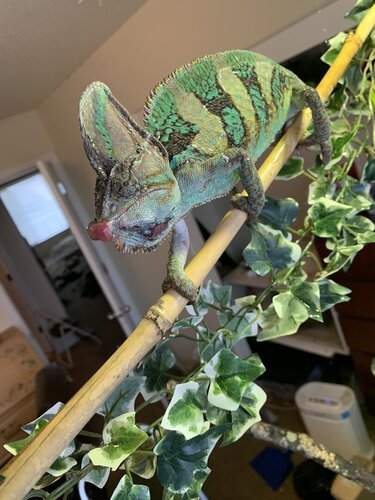
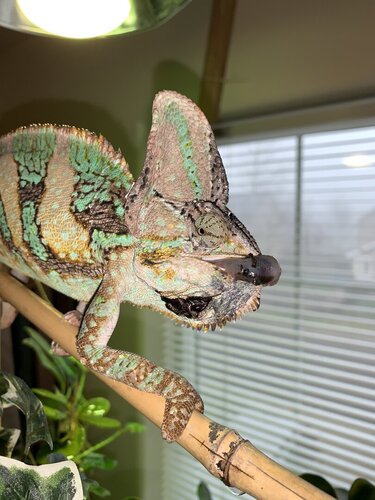
Daily Care:
I was lucky in this area. I have a weed sprayer hoked up so it “rains” I can pump it up and it runs for a bit. Most likely just because it felt good, but he would sit under this all throughout the day. Actually opening his mouth and letting the water run through his wounds. I was going through 2 gallons a day with this(pic 3). This kept his wounds clean and all I really did was watch, and pump the sprayer.
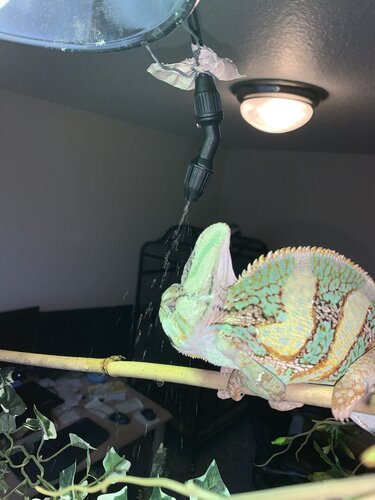
First Issue: Feb 10 – Feb 18
This occurred over the course of the ensuing week. The tongue had proven to be a problem. With it sticking out, combined with the stickiness of their saliva, it was drying to the edge of his mouth. The first occurrence it seemed as though it was more like a scab (pic 4). I gently worked it off, and cleaned dead tissue. At this point it looked OK. Then it started again and this time I realized it was causing harm (pic 5) I then made sure it stayed in his mouth. Within 4-5 days after his mouth appears completely normal.
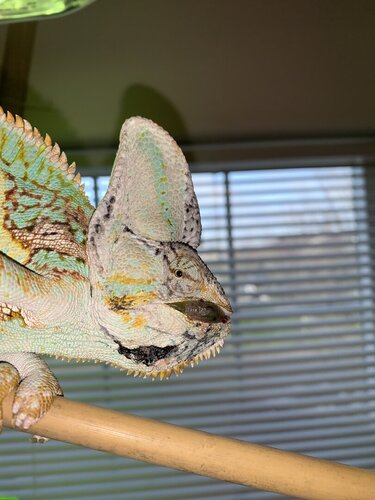
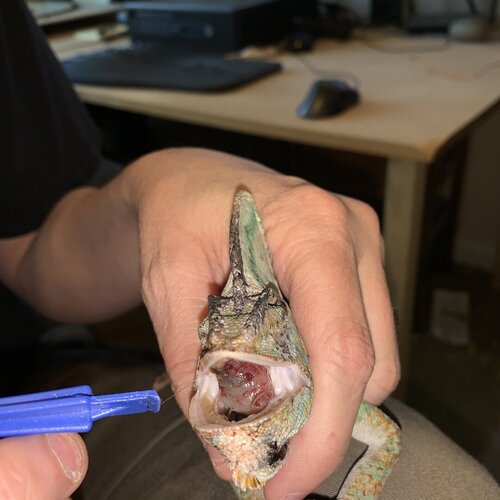
Time to Force Feed: Feb 24.
It had been two weeks without food. I did not want to aggravate the injury, but I had to do something or he would starve. So using a recipe for bug juice, I found on this forum, and an insulin syringe I began feeding 1 ml (2 syringes full) every third day. I am trying too balance nutrients with trauma.
Current:
His tongue looks fine, but he does not use it. The likelihood of injury to the hyoid bone is high do to the type of injury. He has gained a little weight back, and has perked up slightly. When I handle him for feedings his grip is weaker, but this would be expected. Over all his wounds are healing well, I hope he will take back to normal eating, but I am prepared. I offer a hand fed item, followed by 2 small feeders in his dish. If they are not taken I give the syringe. It is a 3 day process.
I am curious on opinions as to how much I should be feeding with the syringe. He will usually take one syringe but may clamp up hard on the second. I do not want to do more damage forcing that hard, so I let it go.
Current state (pic 6)
